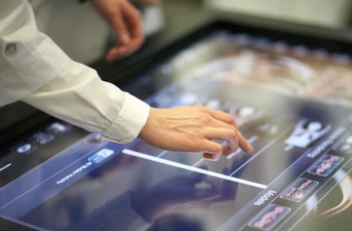Digital pathology refers to the use of digital technology to capture, share and interpret pathological information. Traditional glass pathology slices are scanned and collected by a fully automatic microscope or optical magnification system to obtain high-resolution digital images. The trained artificial intelligence (AI) algorithms are used to analyze digital slices in an objective manner at high speed and high resolution. The obtained high-quality visualization data can be applied to various fields of pathology.

The digital pathology slice system can make pathology resources digitized and networked, realizing the permanent storage of visualized data and synchronous browsing processing that is not restricted by time and space. It is mainly used in morphology-related research, hospital pathology information management, clinical diagnosis of major cases, establishment of a visualized resource database of cases, standardized image analysis and statistical analysis, etc.
Compared with traditional pathological slices, the digital pathological slice system has many advantages:
- Easy to save and manage
- Easy to browse and transfer
- High speed, high efficiency and high throughput
- Facilitate teaching and remote consultation
- Further improve resolution and clarity
- Realize the scanning of fluorescent slices
Creative Bioarray provides a complete range of digital pathology services to promote work processes and improve work efficiency,relying on advanced AI technology and medical image analysis technology.
Biomarker analysis
In terms of biomarker exploration and discovery, digital pathology is a valuable tool that can be used to assist in the interpretation and quantification of the expression of biomarkers in tissue sections. For example, AI algorithms enable researchers to analyze the density and distribution of immunohistochemically or fluorescently labeled biomarkers in large tissue sample data sets.
- Total biomarker staining area
- Cell-level positive biomarkers
- Subcellular biomarker location
- Co-expression of biomarkers
Diagnosis service
Pathological diagnosis is regarded as the final diagnosis of most diseases, especially cancer, and is known as the "gold standard" of disease diagnosis. The digital pathology diagnosis process mainly includes the production of standardized slices, digital scanning of slices, reading of slices with AI algorithm, and manual review of AI prompting positive slices.
The main function of pathology AI at this stage is to exclude negative samples and prompt positive areas, which can assist pathologists to improve the efficiency of pathological diagnosis or replace pathologists in diagnosis of certain diseases.
New drug research
The use of pathological data can not only be used for diagnosis, but also can be used to analyze the effects of new drugs, thereby helping the development of new drugs. The advent of digital pathology has made it possible to accurately count tissue cells. With the help of AI, researchers can quickly and accurately obtain the number, extent, and changes of diseased cells sliced over a period of time, so as to observe the impact of new drugs in clinical trials on the lesions. Furthermore, researchers can use AI to observe the changes of tissue cells in animals after receiving drugs, so as to guide drug development more accurately.
Please contact us for more detailed information.